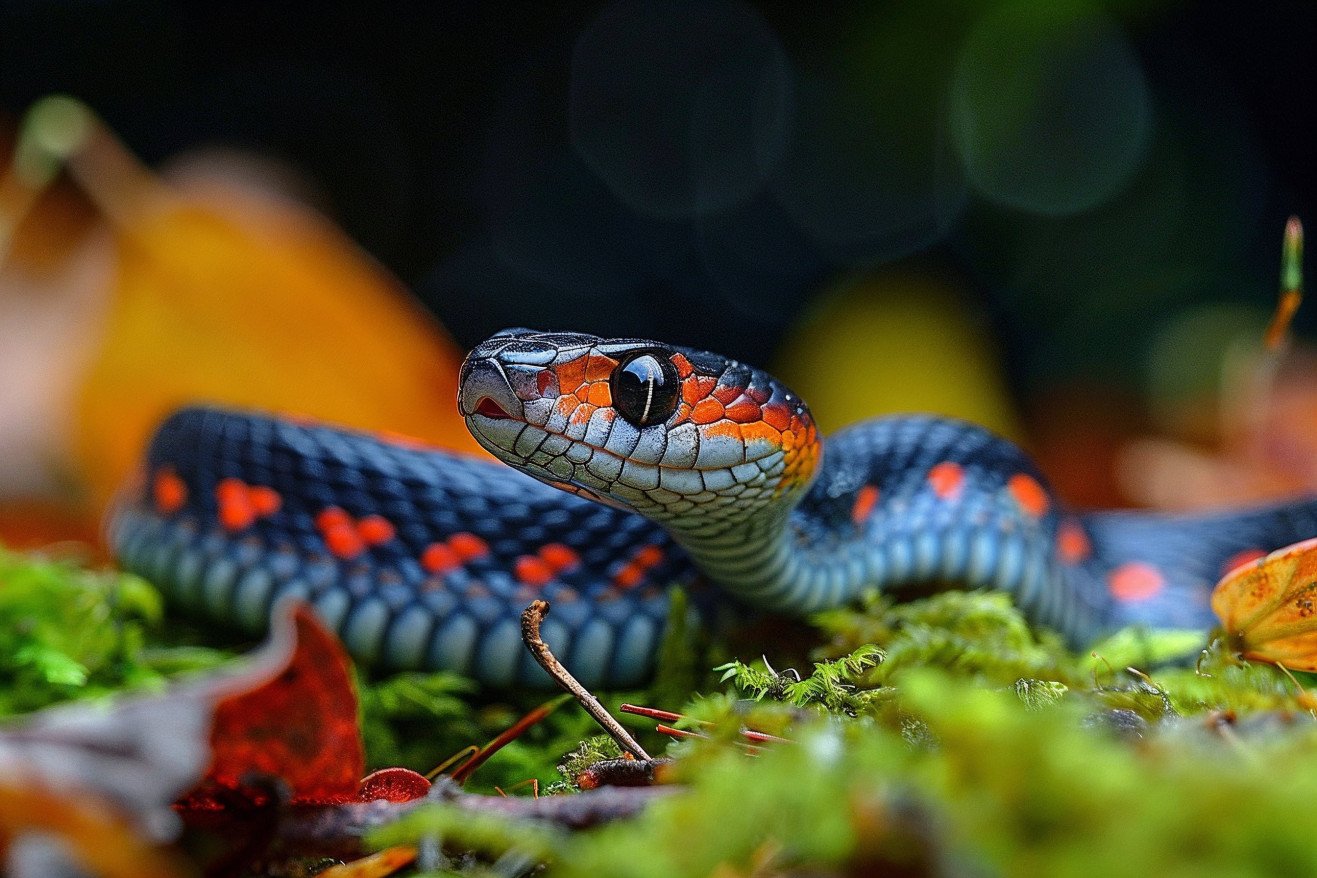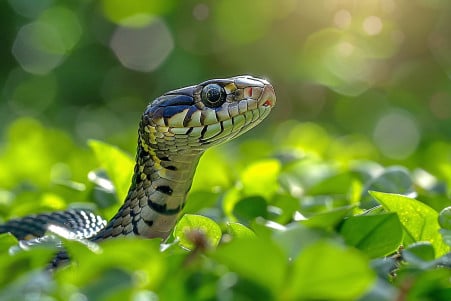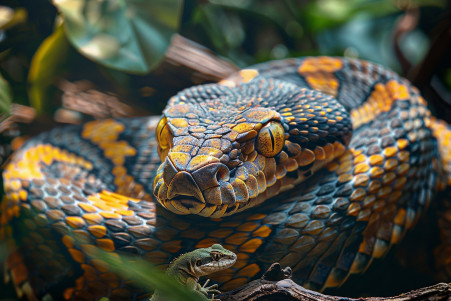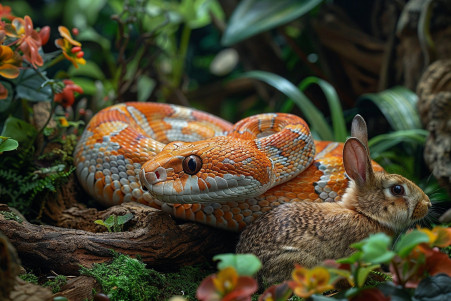What Do Ringneck Snakes Eat? Exploring Their Dietary Needs
22 April 2024 • Updated 22 April 2024

Wondering what to feed those colorful ringneck snakes with their namesake ring around their neck and notorious escape artist tendencies? These nonvenomous, nonaggressive snakes are mostly ophiophagous, which means they eat other snakes, but they also eat lizards, frogs, salamanders, and small mammals.
In this article, we'll take a deep dive into what ringneck snakes eat based on studies by herpetologists and snake hobbyists who have studied their hunting habits in the wild and in captivity. This article will not only answer questions about what these snakes eat but also offer insights that can help you take better care of them as pets.
What do ringneck snakes eat?
How Juvenile Ringneck Snakes Hunt and Eat
Juvenile ringneck snakes are smaller than adults, and therefore they eat smaller prey, such as earthworms, slugs, and insects, according to a thread on Arachnoboards. This means that they may have different hunting behaviors than adults, including ambushing prey and using their small size to get into small spaces.
Despite their small size, juvenile ringneck snakes use the same methods as adults to catch and eat prey, including constriction and venom from their Duvernoy's gland, says Wikipedia. As they get older, they eat larger prey, including salamanders and small frogs, according to the Florida Museum.
It's important to make sure that juvenile ringneck snakes in captivity are fed and cared for properly. This includes making sure that they are fed prey that is the right size for them and that they are kept in the right kind of environment. Knowing how juvenile ringneck snakes eat and what they eat is important for anyone who wants to keep these snakes as pets.
What Do Adult Ringneck Snakes Eat?
Adult ringneck snakes feed primarily on small creatures such as salamanders, newts, frogs, and other young snakes, reports the Loudoun Wildlife Conservancy. They help keep the ecosystem in balance by controlling insect, fungi, and plant populations through their diet.
Ringneck snakes have a mild venom and elongated teeth that help them subdue and hold onto their prey, as noted on AnimalSpot.net. Although they aren't likely to bite, if they do, their venom will cause a mild sting similar to a sweat bee. In the wild, it's important that the right habitat and prey are available to ensure that ringneck snakes have a healthy diet, according to the Florida Fish and Wildlife Conservation Commission.
Feeding Behavior and Diet
Ringneck snakes are primarily nocturnal or crepuscular hunters, which means they search for food at night or during the twilight hours, according to Animalia.bio. They may also hunt on overcast days when they can bask and hunt more effectively, as the Florida Museum points out.
When threatened, ringneck snakes will coil their tails into a corkscrew shape to expose their brightly colored bellies as a defensive mechanism, per Wikipedia. They use constriction and venom to subdue larger prey, and smaller prey are swallowed whole, according to the INHS Herpetology Collection.
Knowing the specific ways that ringneck snakes hunt and eat can help snake lovers set up the right habitats and feeding schedules for these animals in captivity. It's important to make sure that they have the right environments and food sources to stay healthy.
Housing and Feeding Ringneck Snakes in Captivity
Ringneck snakes are relatively low-maintenance pets because of their small size, calm demeanor, and simple dietary needs, according to Arachnoboards. However, it is important to set up their enclosures properly, which includes using the right substrate, providing hiding places, and maintaining the right temperature and humidity levels.
Captive ringneck snakes should be fed a diet that includes a variety of feeder insects, worms, and small amphibians, according to Mass.gov. Meanwhile, Wikipedia explains that juvenile ringneck snakes need to be fed more often than adults and that their meals should be smaller to accommodate their need for more calories to grow and develop.
It's also important to keep an eye on feeding habits and weight to make sure that captive ringneck snakes are getting the nutrition that they need. If they are fed and cared for properly, these small, nonvenomous snakes can be great pets for reptile enthusiasts who are willing to care for them responsibly.
Ecological Role and Conservation
Ringneck snakes are important to their ecosystems because they help control the populations of small prey including insects, slugs, and other invertebrates, according to the Loudoun Wildlife Conservancy. Their specialized diet and feeding habits help ensure that ecosystems remain in balance and retain their biodiversity.
Yet, in some areas, habitat destruction and human development have led to declines in ringneck snake populations, according to Wikipedia. To help ensure that these valuable animals are conserved, it’s important to make sure that their habitats are protected and that the public is aware of the importance of these snakes, according to the Florida Fish and Wildlife Conservation Commission.
Knowing what ringneck snakes eat and how they help maintain the balance of their ecosystems can help ensure that these animals are valued and protected. After all, ringneck snakes are important members of their ecosystems that help control the populations of insects, fungi, and plants through their varied diets.
Conclusion: Knowing the Specialized Diet of Ringneck Snakes
Ringneck snakes have a diverse diet, primarily feeding on smaller snakes, lizards, frogs, salamanders, and small rodents, according to the Museum of Natural History. Their preferred prey includes red-backed salamanders, but they will also consume amphibians, slugs, earthworms, and insects. Young ringneck snakes have been known to cannibalize other snake species, such as juvenile red-bellied and smooth green snakes.
The SREL Herpetology notes that ringneck snakes use their weak venom to subdue their prey, which includes a variety of invertebrates, amphibians, lizards, and other small snakes. Salamanders and earthworms are particularly important food sources in many regions.
According to the Loudoun Wildlife Conservancy, ringneck snakes provide a valuable service to their ecosystems by preying on insect-eating animals like salamanders, newts, toads, and frogs. They also consume slugs and earthworms, helping to balance fungi and plant populations.
The AnimalSpot.net reports that ringneck snakes primarily feed on frogs, small salamanders, slugs, lizards, earthworms, and the young of other snake species. Their saliva contains a mild toxin, but they are not considered poisonous, and their small fangs pose no threat to humans.
These harmless and ecologically important serpents play a vital role in maintaining balanced ecosystems through their unique dietary habits. By understanding their feeding behaviors and dietary needs, we can better appreciate and protect ringneck snake populations in the wild.


